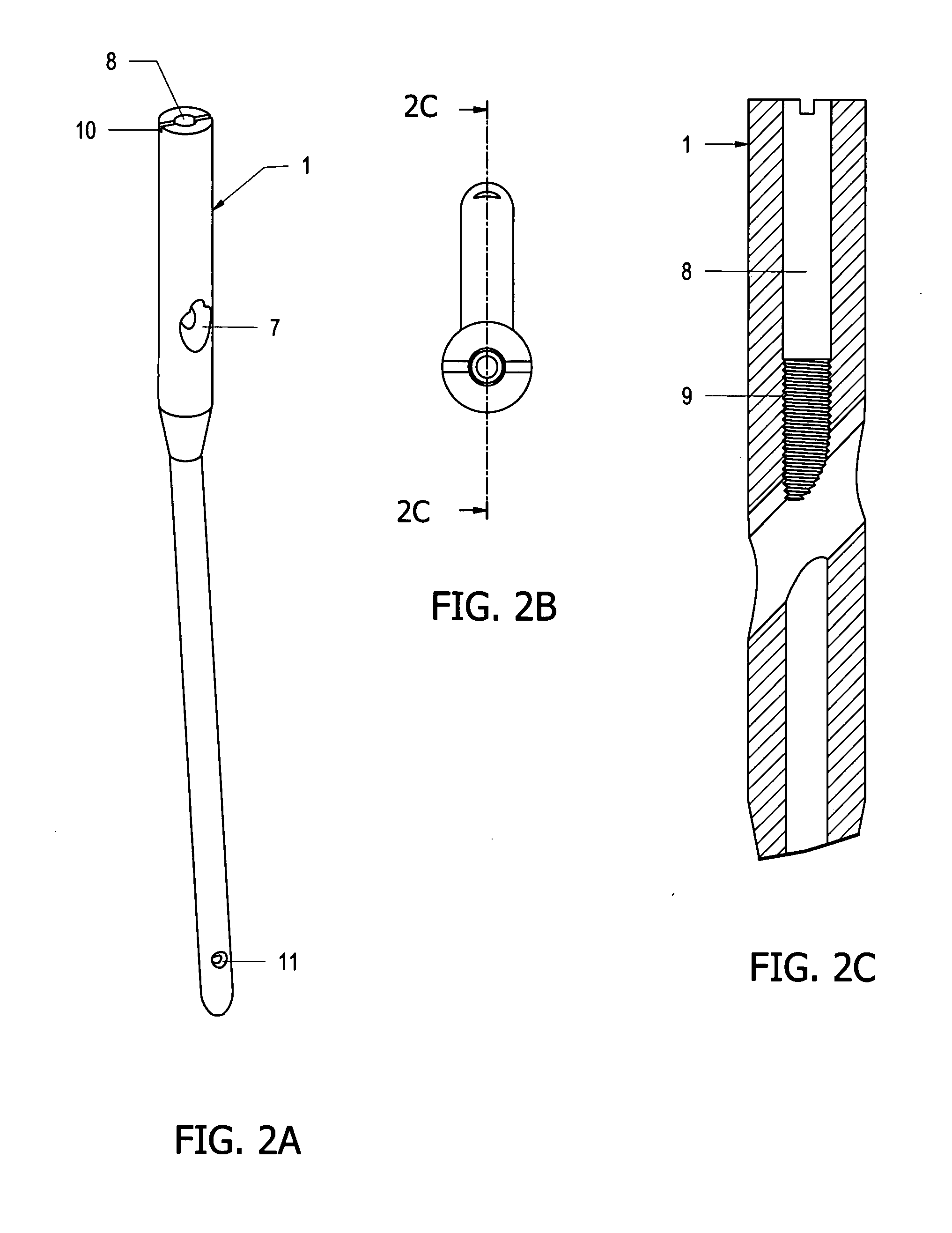Double locked hip implant
- Summary
- Abstract
- Description
- Claims
- Application Information
AI Technical Summary
Benefits of technology
Problems solved by technology
Method used
Image
Examples
first embodiment
[0043]Hereinafter, a device to immobilize bone fragments of fractures occurring in the proximal region of the femur, according to the present invention, will be explained with reference to FIGS. 1-8.
[0044]FIG. 1 illustrates the individual components of the first embodiment of the present invention. In the illustrated embodiment, the device includes an intramedullary nail 1 and two femoral hip implants: the hip screw 3, and the hip peg 4. The optional conventional distal locking screw 2, and an optional coaxial screw 6 are also shown.
[0045]The intramedullary nail 1 is illustrated in FIGS. 2A, 2B and 2C. The intramedullary nail 1 is provided with an oblique opening 7 proximate to its upper end. This oblique opening 7 has a figure eight shape so as to receive the double hip implant assembly 5, and is angled so that when the intramedullary nail 1 is positioned inside the medullary channel, the axis of the oblique opening 7 is directed toward the axis of the femoral neck. The intramedull...
second embodiment
[0051]Next, a device to immobilize bone fragments of fractures occurring in the proximal region of the femur according to the present invention will be explained with reference to FIGS. 9-13A.
[0052]As shown in FIG. 9, the second embodiment of the present invention consists of a side plate 27 with a barrel 31 and two femoral hip implants: the hip screw 28 and the hip peg 29.
[0053]As illustrated in 10A, 10B, and 10C, the side plate 27 consists in a plate with multiple bores 33, which receive the screws that affix the side plate 27 to the femur. At its proximal end, said side plate 27 is solidly affixed to an oblique barrel 31, which has a figure eight shaped cannulation 32. The barrel 31 is angled, so that when the side plate 27 is affixed to the femoral shaft, the axis of the barrel 31 is aligned with the axis of the femoral neck. The figure eight shaped cannulation 32 of the barrel 31 is designed to accommodate the double hip implant assembly, which slidably passes through said figu...
PUM
 Login to View More
Login to View More Abstract
Description
Claims
Application Information
 Login to View More
Login to View More - R&D Engineer
- R&D Manager
- IP Professional
- Industry Leading Data Capabilities
- Powerful AI technology
- Patent DNA Extraction
Browse by: Latest US Patents, China's latest patents, Technical Efficacy Thesaurus, Application Domain, Technology Topic, Popular Technical Reports.
© 2024 PatSnap. All rights reserved.Legal|Privacy policy|Modern Slavery Act Transparency Statement|Sitemap|About US| Contact US: help@patsnap.com










